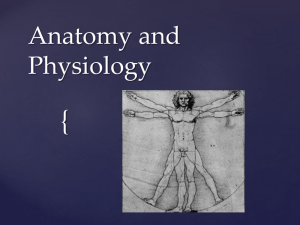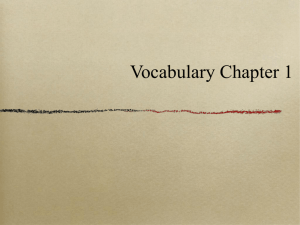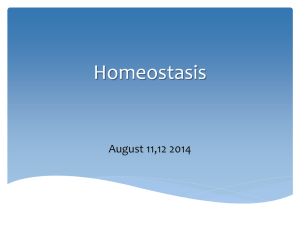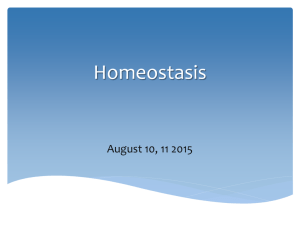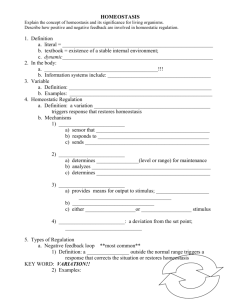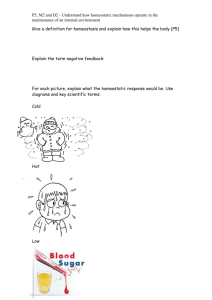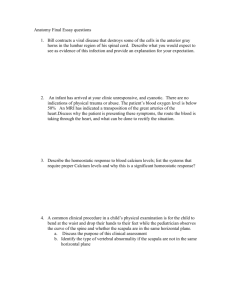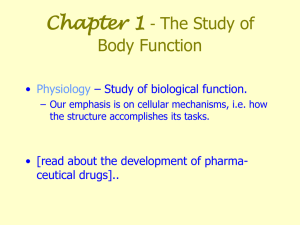Anatomy and Physiology
advertisement
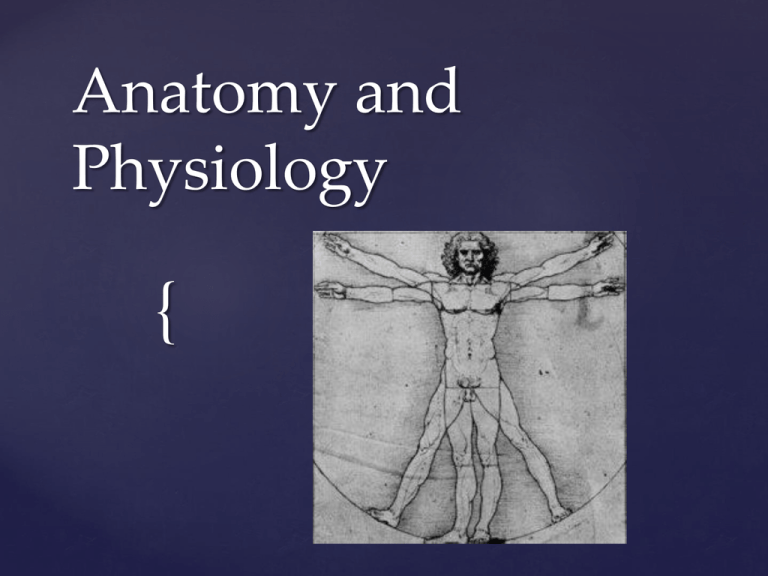
Anatomy and
Physiology
{
Root Words
Find definition, study for quiz on Friday
AppendCardiCranDorsHomeo-logy
MetaParietPelvPeriPleur-Stasis
-Tomy
What is it?
Anatomy: the branch of science that deals with the
structure of body parts
Physiology: concerns the functions of body parts, what
they do and how they do it
Levels of Organization
Atoms: microscopic particles
Molecules: made up of atoms
Macromolecules: molecules combined in complex ways
Cell: Basic unit of living thing
Organelle: structures within a cell that perform a certain
task
Tissue: Group of cells
Organs: Complex structures made up of tissues that
perform a certain task
Organism: Organs make up living things
Characteristics of Life
Metabolism: process of chemical reactions in the body
that break down substances and build them up for energy
Maintenance of Life
- Water, Foods, Oxygen, Heat, Pressure
Characteristics of Life
Metabolsim: process of chemical reactions in the body
that break down substances and build them up for energy
Maintenance of Life
- Water, Foods, Oxygen, Heat, Pressure
Homeostasis: Maintaining a stable internal environment
for survival (Temp, pH, water, etc.)
Homeostatic Mechanisms
Receptors: provide information about specific conditions
in the internal environment
Set Point: tells what a particular value should be (body
temp)
Effectors: cause responses that alter conditions in the
internal environment
Homeostatic Mechanisms
Set Point
Receptors
Effectors
Homeostatic Mechanisms
Set Point
Receptors
Stimulus
Effectors
Homeostatic Mechanisms
Set Point
Change is
compared to the set
point
Receptors
Stimulus
Effectors
Homeostatic Mechanisms
Set Point
Change is
compared to the set
point
Receptors
Stimulus
Effectors
Homeostatic Mechanisms
Set Point
Change is
compared to the set
point
Receptors
Stimulus
Effectors
Response (Change is corrected)
Bloodletting
{
Trepanation
{
Animal Dung Ointments
{
Cannibal Cures
{
Body Portions
Axial Portion: Includes head, neck, and trunk
Body Portions
Axial Portion: Includes head, neck, and trunk
Appendicular Portion: Includes upper and lower limbs
Anatomical Positions
Superior: Body part is above another part, or closer to the
head
Inferior: body part is lower than another, toward the feet
Anterior: Towards the front (Eyes are anterior to the
brain)
Posterior: Towards the back
Medial: Imaginary midline dividing the body into equal
right and left halves.
Anatomical Positions
Lateral: toward the side with respect to the midline (Ears
are lateral to the eyes)
Bilateral: refers to paired structures, one on each side
(lungs)
Ipsilateral: structures on the same side (right kidney and
right lung)
Proximal: Body part that is closer to the trunk (elbows are
proximal to wrist)
Distal: Opposite of proximal, farther away from trunk
Superficial: placed near the surface of the skin
Deep: more internal parts
Draw and label your own anatomical
person.
Use figure 1.13 on page 14 in your text
